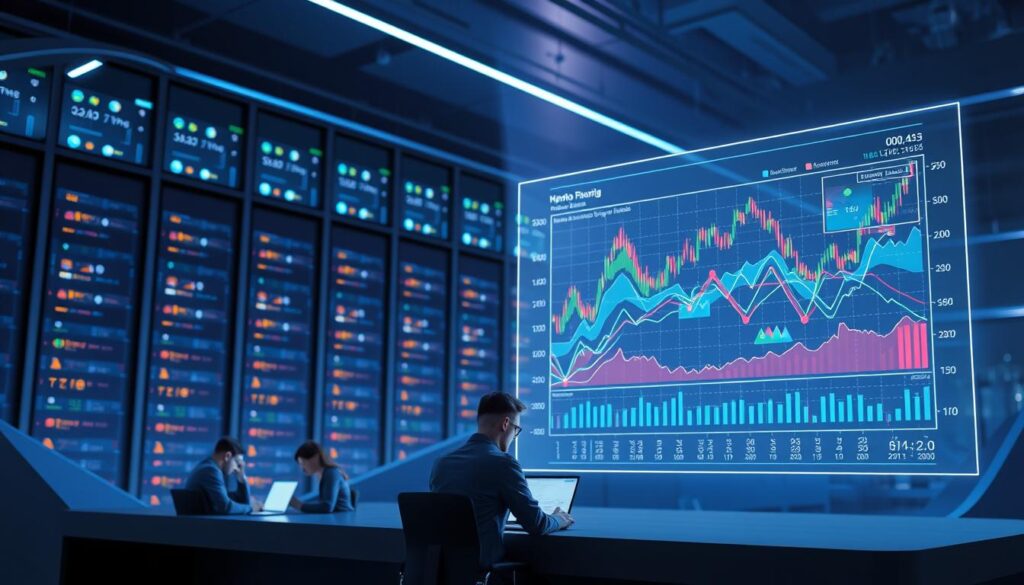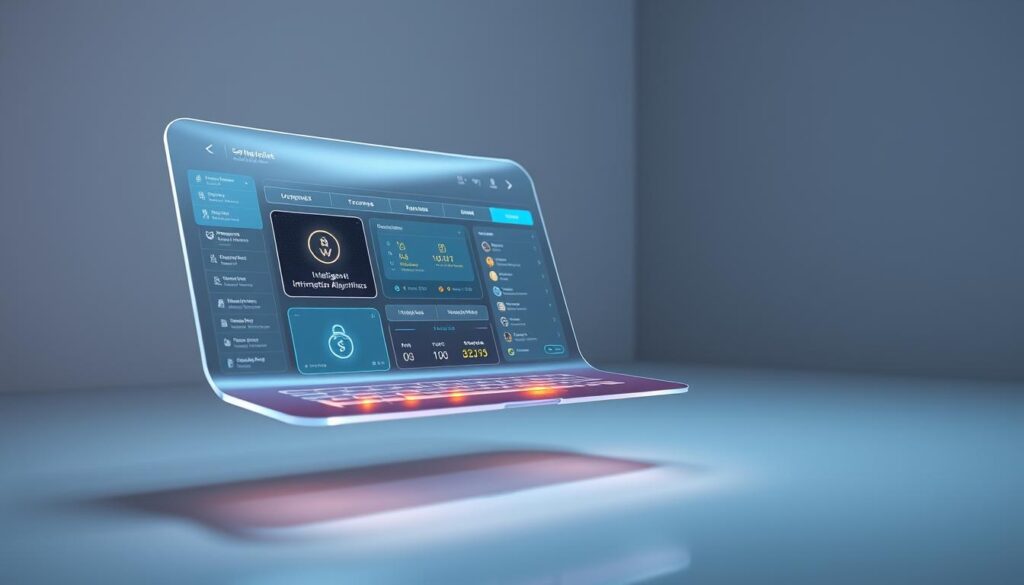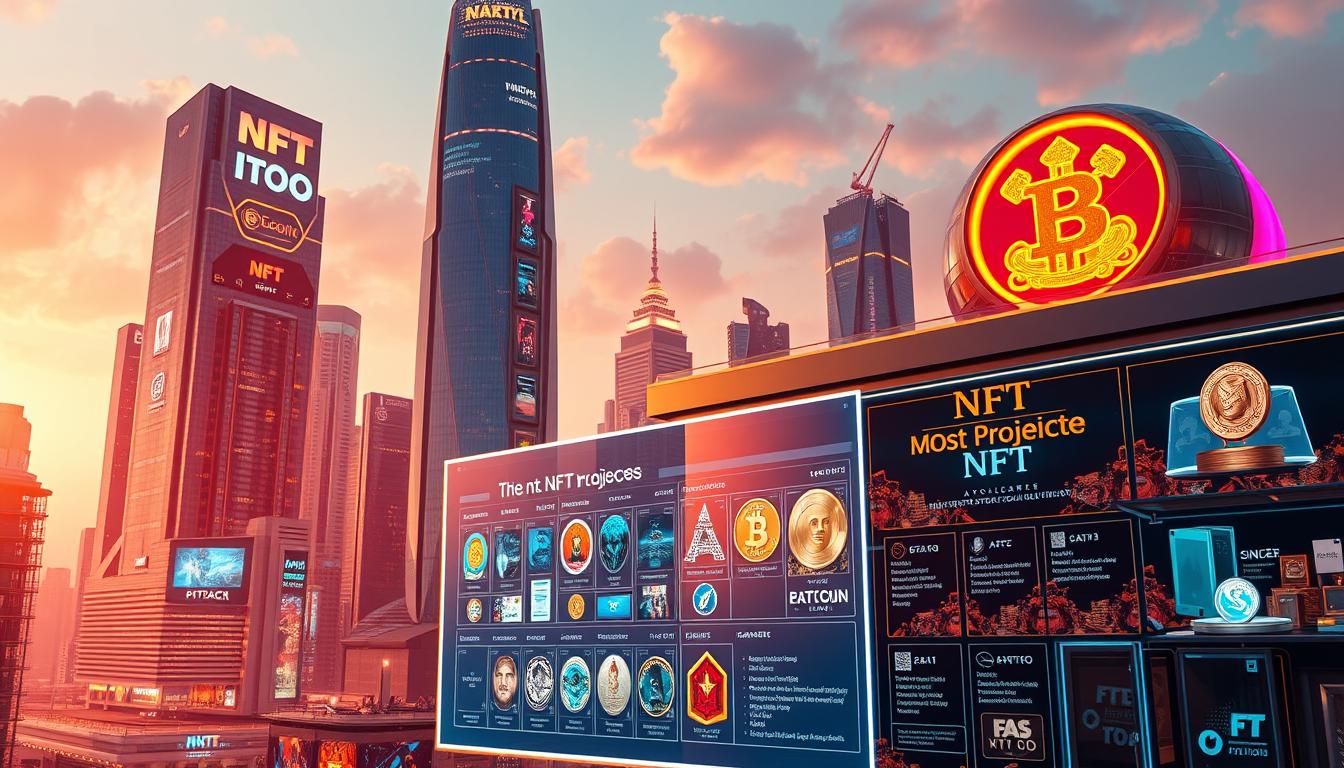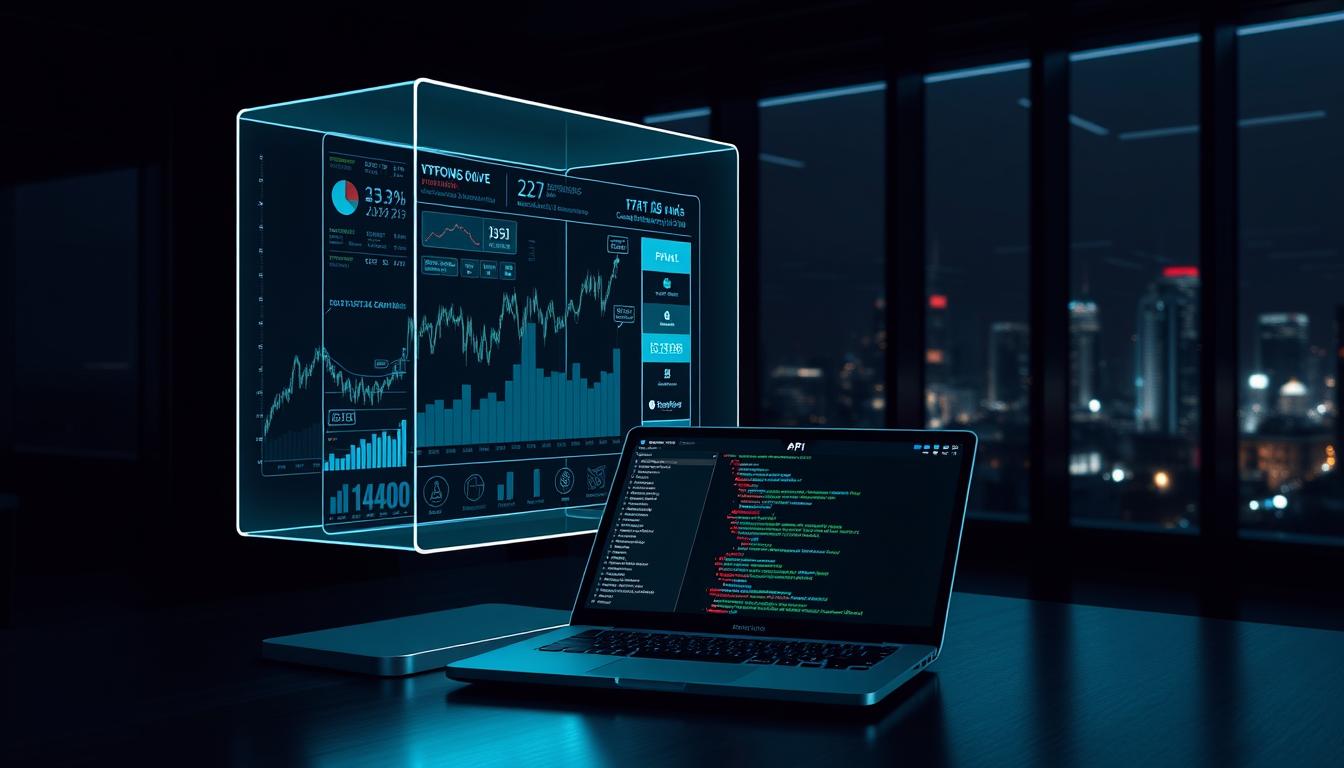Now Reading: AI Crypto Mining Optimization Algorithms for Enhanced Profitability
- 01
AI Crypto Mining Optimization Algorithms for Enhanced Profitability
AI Crypto Mining Optimization Algorithms for Enhanced Profitability
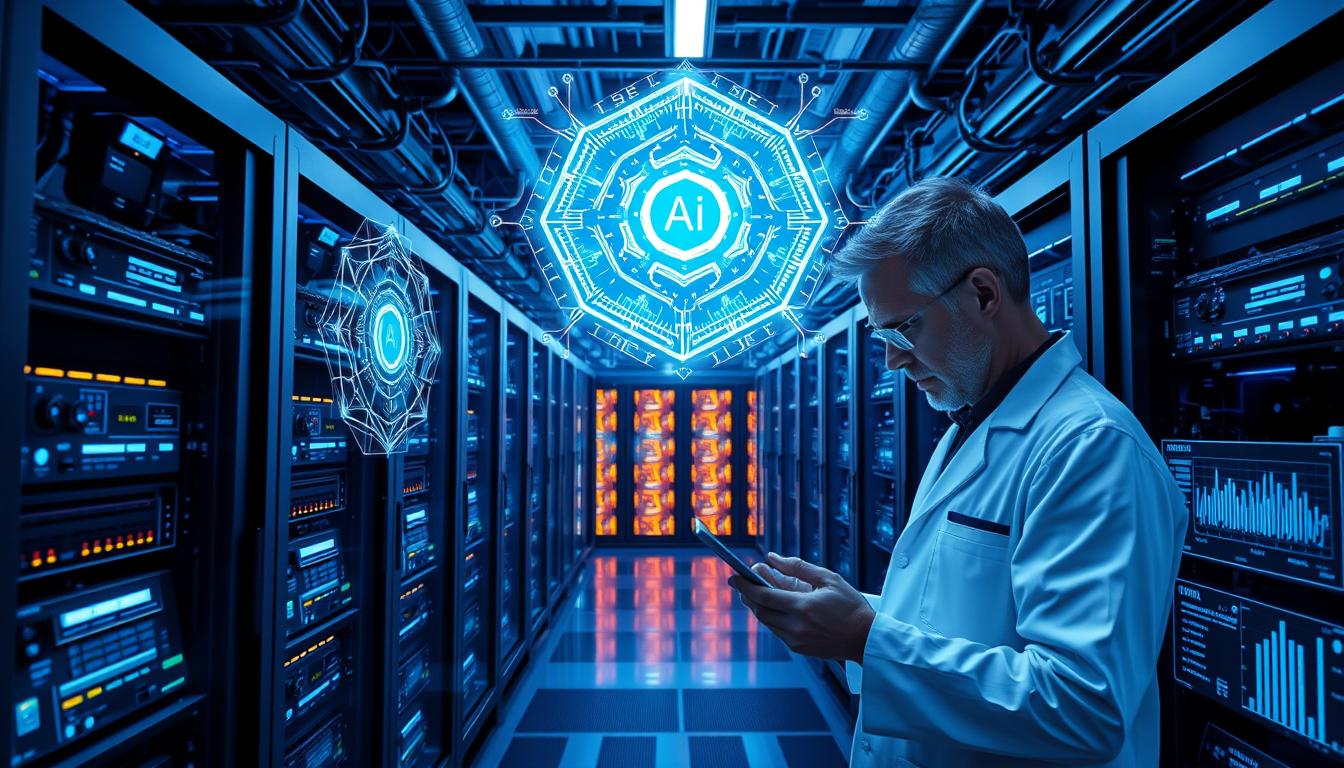
This guide explains how modern systems lift cryptocurrency mining from sheer brute force to smart, data-led operations. The focus is on how algorithms, hardware, and workflows connect to cut costs and raise yield.
Cryptocurrency mining is the process that validates transactions and adds blocks to a blockchain ledger. Miners use specialized hardware and software to compete for rewards, so both the device and the code matter.
Operators can manage energy and power needs by tuning hardware and applying real-time controls. This increases efficiency and keeps operations profitable across scales, from a single rig to large farms.
This long-form piece offers a practical overview of present challenges and the techniques that turn data into live improvements. For tools that support this work, see a useful roundup of cryptocurrency mining software.
Key Takeaways
- Smart methods layer insight over the core blockchain process without replacing it.
- Hardware and software must work together to control power and energy use.
- Real-time adjustments help miners cut costs and improve throughput.
- The U.S. market pressures infrastructure and drives new solutions.
- Small operators and farms both benefit from efficiency gains.
Why AI Matters in Cryptocurrency Mining Today
Modern mining sites run like industrial plants, where power draw and cooling dominate costs.
Today’s cryptocurrency mining landscape is energy-heavy. Operators look for intelligent ways to cut energy consumption while keeping hashrate and uptime steady.
From energy-heavy operations to intelligent efficiency
Active load balancing, temperature-aware fan curves, and adaptive voltage and frequency control help trim power use.
Large firms such as Genesis Mining, Bitmain, and Hive Blockchain report fewer outages and better energy management after adding monitoring tools.
How technology transforms blockchain operations without compromising security
Systems use sensor data and performance logs to tune parameters in real time. Predictive models alert miners to hardware faults before they cause downtime.
- Respond to network and market trends for smarter participation in mining operations.
- Preserve the integrity of transactions blockchain consensus rules remain unchanged.
- Lower operational risk and steadier returns through data-informed scheduling and power management.
Result: smarter, automated workflows let miners sustain output amid rising difficulty and market variability while cutting costs.
AI crypto mining optimization algorithms: how they work and where they add value
Smart control systems use live rig telemetry to tune performance and cut power waste. These tools turn sensor inputs into actionable setpoints for clocks, fans, and power limits.
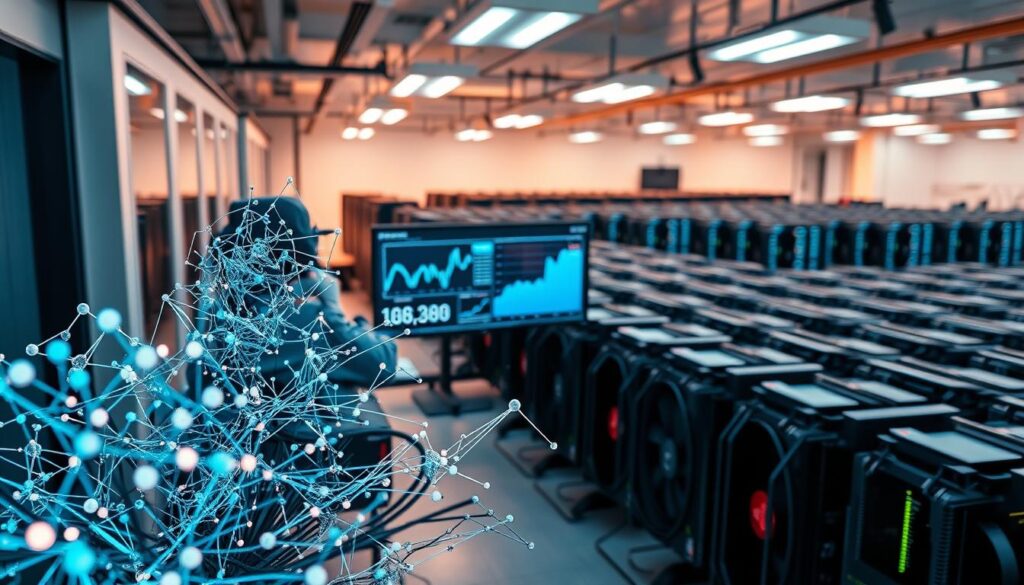
Learning from data: models that tune hash rates and voltage in real time
Algorithms ingest temperature, hash rate, and error logs. Machine learning models set voltage and frequency targets that balance throughput and longevity.
Thermal management and load balancing
Closed-loop control adjusts fan curves and spreads workloads across racks. That lowers cooling needs and improves energy efficiency.
Predictive maintenance to reduce downtime
Predictive maintenance watches anomalies in fan speed, PSU currents, and board errors. Early alerts cut unplanned downtime and repair costs for miners.
Dynamic pool selection and resource allocation
Systems evaluate latency, payout variance, and fees, then shift hash rate to pools with better risk-adjusted returns. Interoperability layers let models handle gpus and asic miners with tailored policies.
- Ingest rig data and set voltage/frequency in real time.
- Use closed-loop checks to protect hardware performance.
- Flag anomalies early to keep operations online.
Hardware, energy, and operations: applying AI across mining stacks
Operators now tune hardware stacks to squeeze more throughput from each watt of power. This work maps mining hardware—ASICs, GPUs, and auxiliary processing units—so software can protect parts while keeping output steady.

Optimizing ASIC miners and GPUs for efficiency and longevity
Fine-grain control sets voltage, frequency, and workload per device. Bitmain tunes asic miners in real time to cut energy use and boost profitability.
Hive Blockchain coordinates thousands of gpus to keep hardware performance high and lower energy consumption across farms.
Integrating renewable energy and AI-driven cooling to manage consumption
Systems schedule workloads to match available energy, shaving peaks and improving energy efficiency. Variable fan curves and hot-aisle/cold-aisle tuning reduce energy consumption without throttling rigs.
Case examples and scaling considerations
Genesis Mining uses predictive maintenance and energy management to reduce downtime. Openfabric’s 2024 collaboration with NVIDIA eased access to tools that accelerate deployment for miners.
- Optimize hardware routines to reduce thermal stress and extend component life.
- Use computational resources and computational power to scale control loops that inform algorithms.
- Small per-device gains compound across fleets to cut facility-level energy consumption and lower costs.
Profitability strategies miners use with AI, from Bitcoin to ASIC‑resistant coins
Profit margins depend as much on algorithm choice as on electricity and hardware life. Operators pick proofs of work to match rigs and local costs. That choice shapes short‑term revenue and long‑term returns.
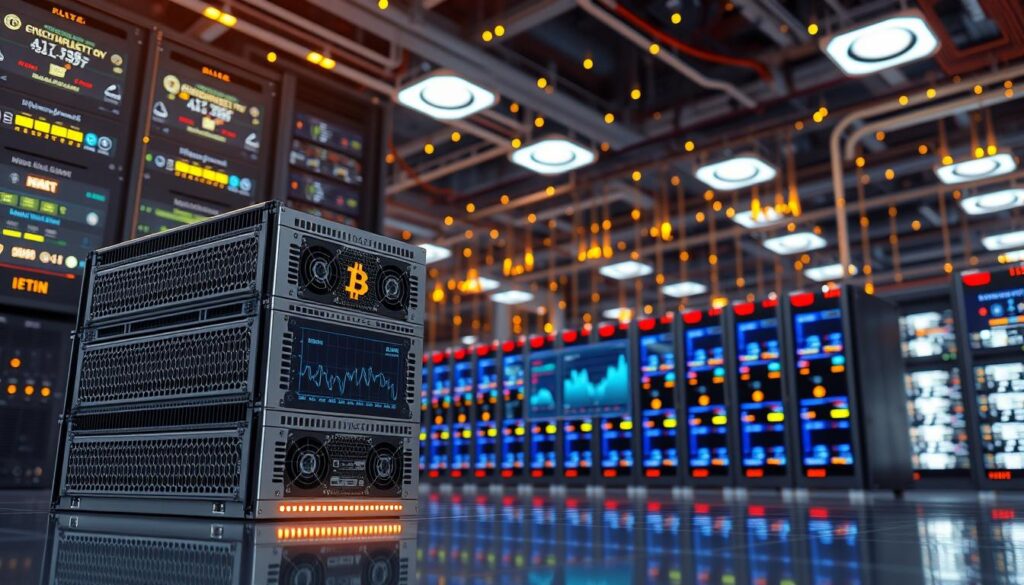
Aligning algorithms with hardware and costs
Popular proofs include SHA‑256 (Bitcoin, Bitcoin Cash), Scrypt (Litecoin, Dogecoin), Ethash (Ethereum Classic), Equihash (Zcash), and X11 (Dash).
Miners balance capex and opex by matching ASICs to SHA‑256 or GPUs to Ethash and Equihash. ASIC‑resistant coins can reduce centralization mining power but often trade raw throughput for wider participation.
Market trend prediction, difficulty, and timing for margins
Smart models forecast market trends, mining difficulty, and fee spikes so operators can switch coins or pools when margins rise.
Integrating electricity price signals helps throttle or accelerate processing to save energy and limit hardware wear. AI can also refine cooling, voltage, and frequency to squeeze extra hash per watt and protect profitability.
- Strategies: match algorithms to hardware and expected returns.
- Use forecasts to time intense runs and reduce wasteful processing.
- Track difficulty, spreads, and fees to keep tactics adaptive and disciplined.
For a deeper look at ASIC performance and cost, see this guide on bitcoin mining profitability.
The road ahead for AI-driven mining optimization
The next wave of tools will tie real-time grid signals to rig behavior to save power and boost returns.
Artificial intelligence will deepen its role across cryptocurrency mining and mining operations, making real-time fleet control standard.
Expect wider use of predictive maintenance and models that orchestrate gpus and asic miners with awareness of electricity markets and thermal limits.
Energy efficiency and reduced energy consumption will stay central, driving advances in cooling, renewable integration, and power-aware scheduling.
Teams will balance decentralization against centralization mining power risks while they continue to optimize hardware performance and preserve protocol security.
Tooling partnerships, like NVIDIA and Openfabric, plus research into quantum resilience, will help miners align operations with market trends and long-term profitability.


